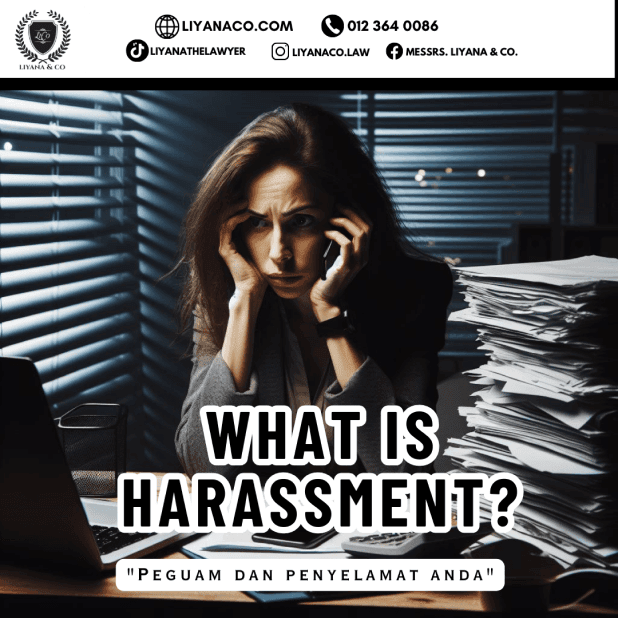
Have you ever faced a situation where you have been harassed continuously by someone to the extent that it affects the quality of your life?
This can be considered a form of harassment. Harassment refers to words or behaviour that threaten, intimidate, or demean someone. Interference is accepted as unwanted, uninvited and causes extreme emotional disturbance and stress.
Elements of harassment
There are 4 elements that need to be established:
(1) The defendant has engaged in repeated communications, threats, insults, stalking, or other harassing behaviours in person or through other means;
(2) That they knew or ought to have known was unwelcome;
(3) Which impugn the dignity of the plaintiff, would cause a reasonable person to fear for their safety or the safety of their loved
ones, or could foreseeable cause emotional distress; and
(4) Caused harm.
Sexual harassment at work? The victim can take civil action against the perpetrator
The challenging world of work has many twists and turns that will affect everyday life.
Sometimes the problem that occurs is because of sexual harassment by a colleague at work!
So what are your rights?
If the matter does not give you comfort and causes you to be
mentally affected and have difficulty going to work, this matter can be considered as sexual harassment. This situation must occur more than once. Sexual harassment can not only happen through name contact but also through conversation.
Through the Public Service Commission’s April 2023 circular, it has been established that acts such as calling someone with words such as “dear, sayang” are sexual harassment.
CASE: Mohd Ramli Rahman v Hasnah Hj Ali (bukan nama sebenar) [2016] 4 MLJ 282
In this Federal Court case, the
highest court in Malaysia, the appellant, and respondent, both employees of Lembaga Tabung Haji, were involved in a dispute regarding allegations of sexual harassment. Despite an inquiry finding insufficient evidence for disciplinary action, the appellant received an administrative reprimand. Dissatisfied, the appellant sued the respondent for defamation. The High Court ruled against the appellant, also awarding damages to the respondent for sexual harassment. The Court of Appeal upheld this decision.
The main issue was the validity of a civil claim for sexual harassment under Malaysian law. The court affirmed the appellant’s misconduct, which included making vulgar remarks causing distress to the emotionally vulnerable respondent. It upheld the damages awarded for sexual harassment, concluding that the appellant’s behavior constituted persistent and deliberate conduct aimed at causing fear and distress, justifying the damages awarded to the respondent.
Society Stigma: Men don’t even feel if they are sexually harassed!
Men also need to be loved and protected.
When discussing the issues of harassment, almost all cases discussed involve male perpetrators and female victims. So the question here is, men can take civil action for harassment cases.
In the United Kingdom, it was decided in the case of Hayes v Willoughby [2013] 1 WLR 935, where the Defendant (L) was
found guilty of nuisance by sending letters to a government body in an attempt to tarnish the reputation of the Plaintiff(L) with false allegations such as fraud.
This case has also been referred to in the case shared before and shows that harassment also happens to men, and this harassment also includes sexual harassment.
Tort of Assault vs Tort of Harassment
The tort of assault and the tort of harassment are distinct legal concepts. Assault pertains to intentional threats of physical harm or the creation of reasonable fear of immediate harm, regardless of physical contact. Harassment, on the other hand, is broader and involves a
pattern of unwanted and distressing behaviour, including repeated communications, insults, stalking, or intrusive actions, which may or may not include physical threats.
While assault focuses on physical harm or the threat thereof, harassment encompasses a range of behaviours that impugn dignity, cause emotional distress, or create a hostile environment. Harassment typically involves a series of actions over time. Both torts aim to provide legal remedies for harm but address different types of harmful behaviour and harm.
Do you need legal advise?
Do you need answers and solutions in a legal action? Get legal advice from our lawyers at Liyana & Co.
Our lawyers have 10 years of experience in solving complex legal problems.
“Your Legal Savior”
📞📱 Let’s set an appointment and contact us at: